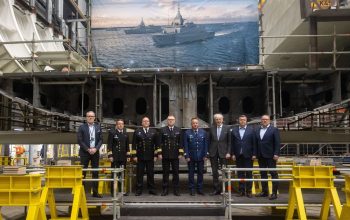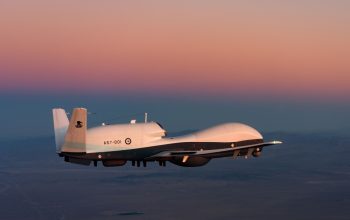The Royal Thai Navy (RTN) operates a mixed fleet of UAVs, but it is adding more Austrian-built Camcopters to the mix. Schiebel has received a contract from the Royal Thai Navy (RTN) to supply its Camcopter S-100 vertical take off and landing (VTOL) unmanned air systems (UAS). The contract was awarded following a competitive tender process. Schiebel has formed a partnership with Thailand-based MoraThai Defence Company. The order will see the RTN use VTOL UAS systems for maritime operations for the first time.
The RTN is preparing to procure two additional Camcopter S-100 UAVs from Schiebel to enhance its reconnaissance capability and patrol sea areas in Thailand’s south. The RTN procured its first two Camcopter S-100s for THB600 million ($19.4 million) in 2020. Their main operating station is Pak Phanang District in Nakhon Si Thammarat Province, where they operate with RTN frigates. The House of Representatives agreed to spend a total budget of THB570 million ($18.38 million) for these systems in August.

The Schiebel Camcopter S-100 is an Austrian unmanned aerial vehicle (UAV) using a rotorcraft design. The Vertical Takeoff and Landing (VTOL) UAS needs no prepared area or supporting launch or recovery equipment. It operates day and night, under adverse weather conditions, with a range out to 200 km, both on land and at sea. The S-100 navigates automatically via pre-programmed GPS waypoints or can be operated directly with a pilot control unit. Missions are planned and controlled via a simple point-and-click graphical user interface.
Produced by the Austrian company Schiebel, it was developed from 2003 to 2005. With a maximum take-off weight (MTOW) of 200 kilograms (440 lb), its endurance is 6 hours (extendable to over 10 hours with optional external AVGAS fuel tanks fitted[1]). It has a maximum speed of 220 kilometres per hour (140 mph) and a ceiling of 5,500 metres (18,000 ft). It is powered by a 55 horsepower (41 kW) Diamond engine and can carry various payloads, such as electro-optics and infrared sensors.














